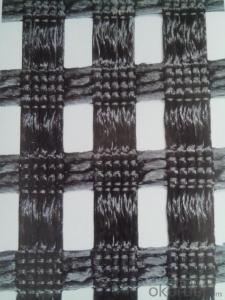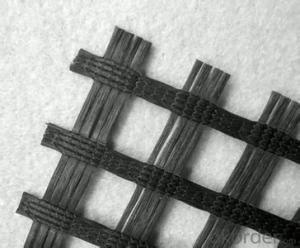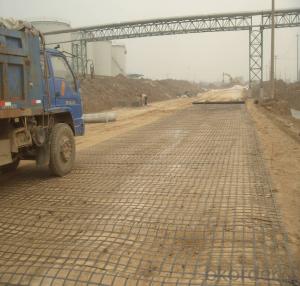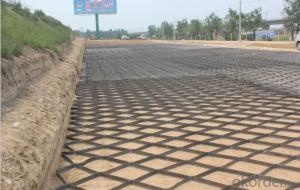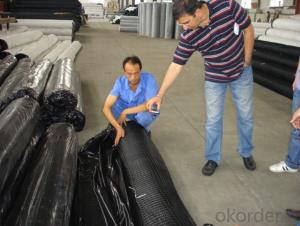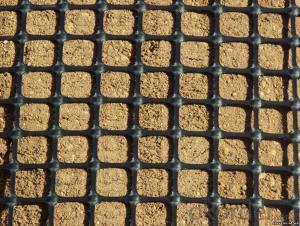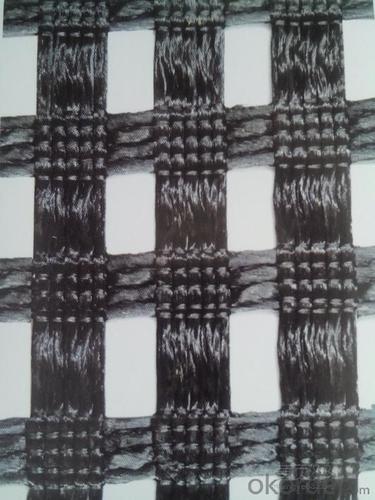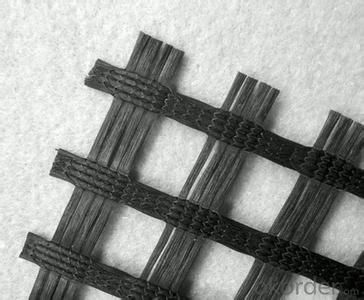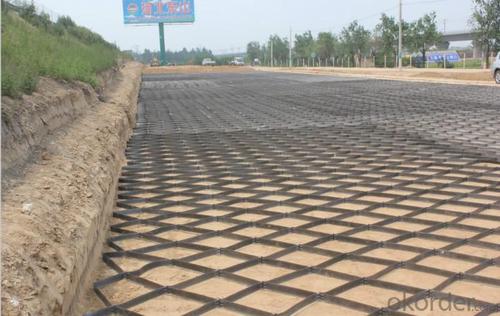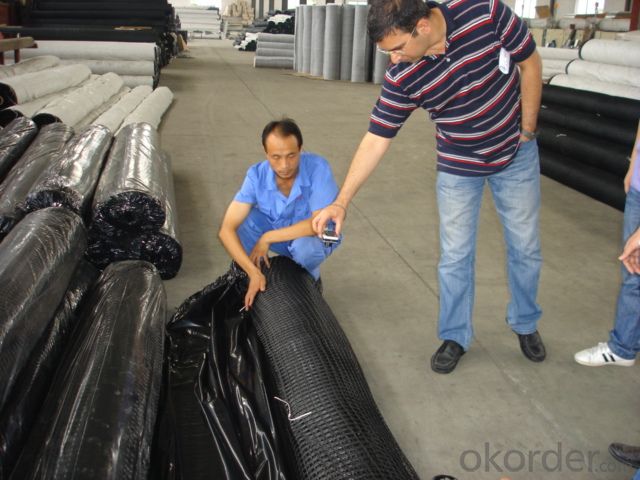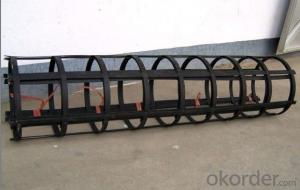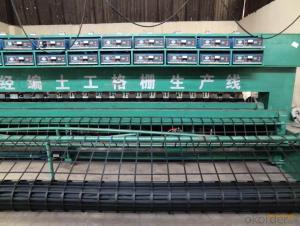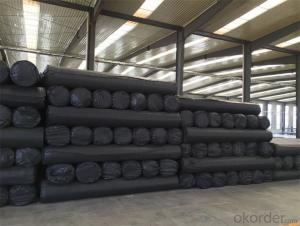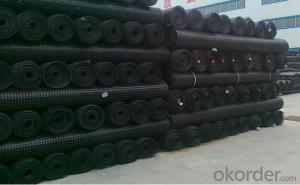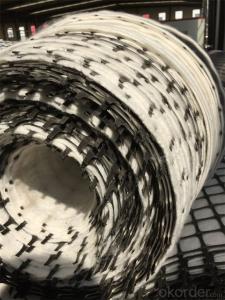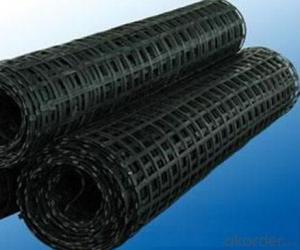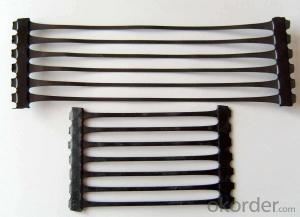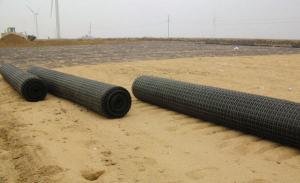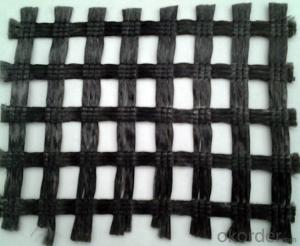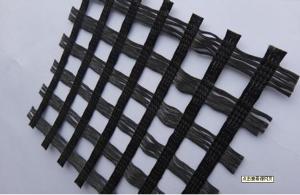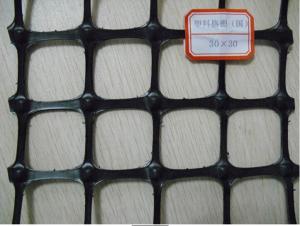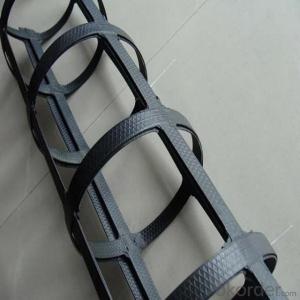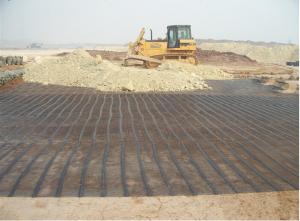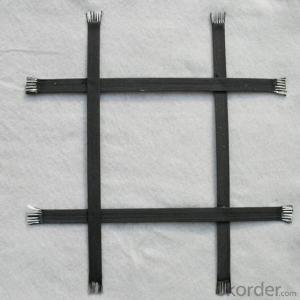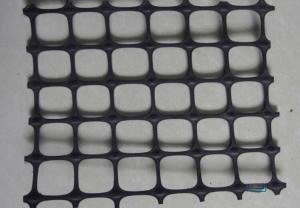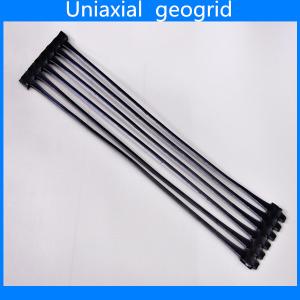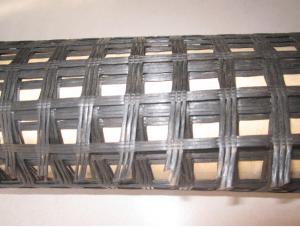HDPE Geocells - Polyester Geogrids Uniaxial & Biaxial Warp-Knitting
- Loading Port:
- China main port
- Payment Terms:
- TT OR LC
- Min Order Qty:
- 10000 m²
- Supply Capability:
- 100000 m²/month
OKorder Service Pledge
OKorder Financial Service
You Might Also Like
Description: From Okorder.com, you could find polyester geogrids, then please find more details about fiberglass geogird and make an inquiry for polyester geogrids at here.
We specilize in polyester geogrid industry for more than ten years. There are many different polyester geogrid elongations, which could meet your project requirement. According to different projects, we could recommand you different polyester geogrid.
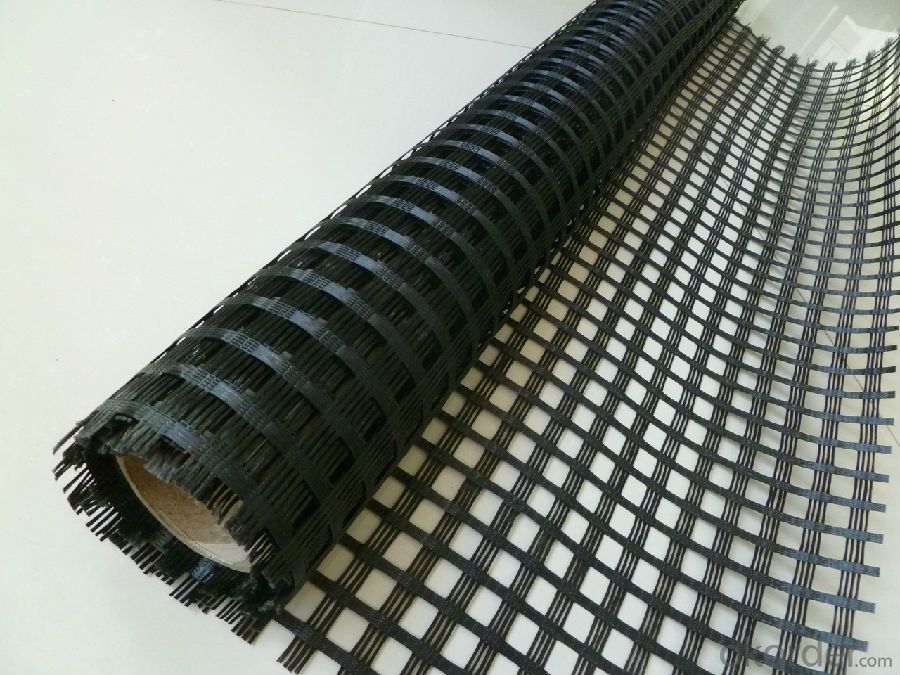
Polyester Geogrid Introduction
Polyester geogrid is a kind of new favorable earthwork base material to strengthen the road surface and roadbed. This product is made by weaving and covering polyester filament. It is featured by high vertical and horizontal tensile strength, low unit extension, high flexibility, and favorable high and low temperature resistance. The products after surface covering own the favorable property of alkali resistance and aging resistance
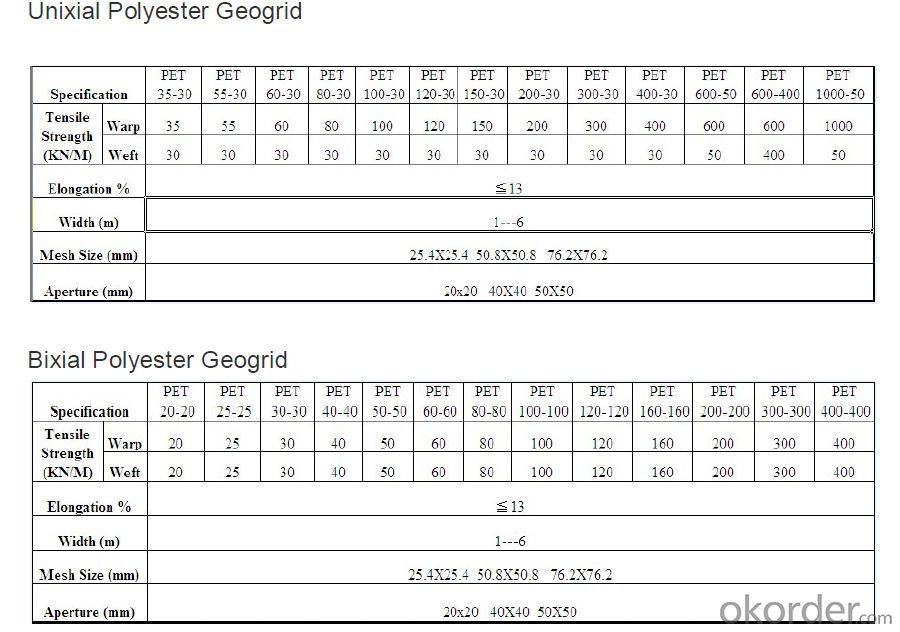
Polyester Geogrid Features :
1. Polyester geogrid for soil reinforcement
2. Pavement subgrade stabilization
3. Area /Ground stabilization
4. Pavement base reinforcement
5. Working & load transfer platforms
6. Rail Track-bed stabilization
7. Reinforced granular foundation beds
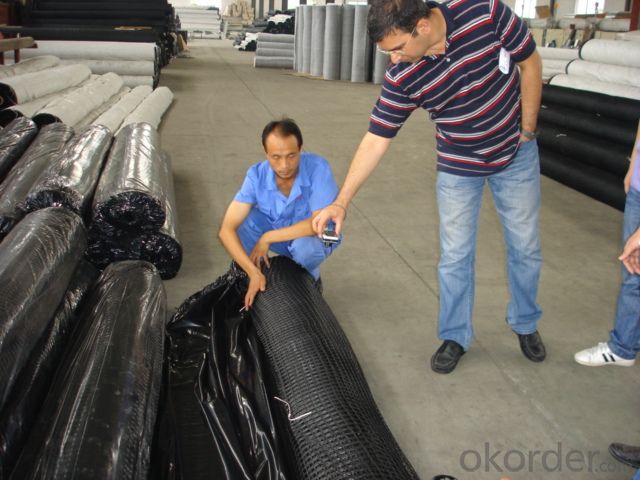
Polyester Geogrid PROPERTIES
1. High tensile strength in both the warp and weft directions;
2. Low elongation;
3. Excellent temperature range;
4. Good anti-age and alkali-resistance;
5. Reduce construction cost, extend service life of road and prevent deflection cracks.
FAQ:
Q: What kind of payments does jenor support?
A: T/T, L/C, Cash are accepted.
Q: Do you charge for the samples?
A: Accordeing to our company policy, the samples are freee, we only charge the freight fee. And we will return the freight fee during the next order.
Q: Can you produce according to customers' design?
A: Sure, we are professional manufacturer, OEM and ODM are both welcome.
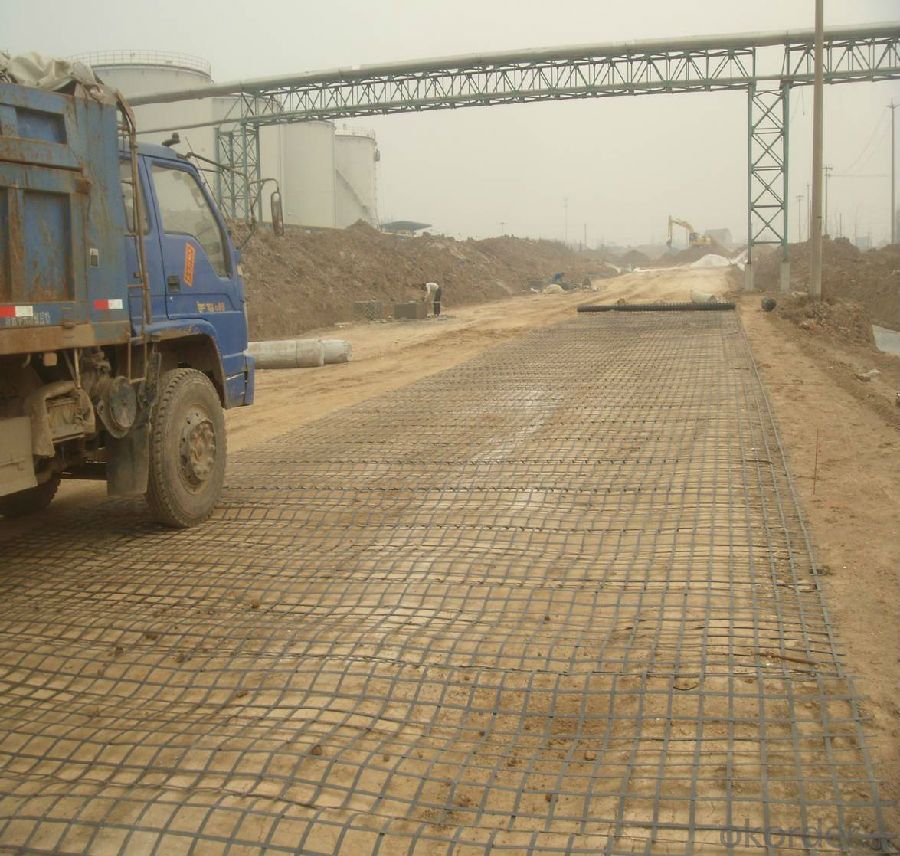
If you want to find more details about the fiberglass geogrid, you could make an Inquiry in okorder.com. Okorder.com provides you the products with best price and quality!
- Q: Are geogrids suitable for use in slope stabilization for mining haul roads?
- Yes, geogrids are suitable for use in slope stabilization for mining haul roads. Geogrids are engineered materials that provide reinforcement and stability to soil, improving its load-bearing capacity. They are commonly used in various applications, including slope stabilization, to prevent soil erosion and maintain the integrity of the road. By distributing the load more evenly and reducing the potential for soil movement, geogrids enhance the safety and durability of mining haul roads.
- Q: How do geogrids improve the performance of geotechnical structures?
- Geogrids improve the performance of geotechnical structures by enhancing their load-bearing capacity, reducing soil erosion, and providing stability. These synthetic materials are used to reinforce soil, increasing its strength and preventing it from shifting or settling. By distributing the load more evenly, geogrids minimize the potential for structural failure and improve overall stability. Additionally, they help to control soil erosion by stabilizing slopes and retaining walls, reducing the risk of landslides and erosion-related damage.
- Q: What are the factors that affect the design of geogrid-reinforced structures?
- Several factors can influence the design of geogrid-reinforced structures. These factors include the type and properties of the soil, the magnitude and type of loads the structure will experience, the desired level of stability and durability, the site conditions and constraints, and any applicable design codes and standards. Additionally, factors such as construction techniques, environmental considerations, and cost-effectiveness also play a role in determining the design of geogrid-reinforced structures.
- Q: What is the 110 type bidirectional geogrid?
- Geogrid is a kind of polymer material with square or rectangular shape which is formed by stretching. It can be used as two kinds of uniaxial tension and biaxial tension. The utility model is punched on the extruded polymer plate (raw material is polypropylene or high-density polyethylene), and then directionally stretched under the heating condition. The unidirectional stretching grid is only drawn along the length direction of the plate, and the bidirectional stretching grid is made by stretching the unidirectional stretching grid in the direction perpendicular to the length.
- Q: Can geogrids be used in slope stabilization for railway embankments in permafrost regions?
- Yes, geogrids can be used in slope stabilization for railway embankments in permafrost regions. Geogrids are commonly used to reinforce and stabilize slopes by providing tensile strength and distributing loads, which can help prevent slope failures and erosion. In permafrost regions, where the frozen ground can be unstable and prone to movement, the use of geogrids can be particularly effective in reinforcing embankments and maintaining their stability.
- Q: Are geogrids suitable for use in bridge approaches?
- Yes, geogrids are suitable for use in bridge approaches. Geogrids provide soil stabilization and reinforcement, which is crucial in bridge approaches where the soil needs to withstand heavy loads and potential settling. They improve the overall strength and stability of the soil, preventing erosion and increasing the lifespan of the bridge approach.
- Q: What is the difference between a uniaxial and a biaxial geogrid?
- A uniaxial geogrid is designed to provide strength and stability in one direction, typically in the longitudinal axis. It is used to reinforce soil or other materials in applications such as road construction, retaining walls, and embankments. On the other hand, a biaxial geogrid is designed to provide strength and stability in both the longitudinal and transverse directions. It offers enhanced reinforcement capabilities and is commonly used in applications where multidirectional support is required, such as steep slopes, ground stabilization, and pavement systems.
- Q: How to choose 15kn bidirectional geogrid geogrid
- What is the quality of geogrid, geogrid quality is produced out of the geogrid and we say the kind of geogrid, specifications are consistent with the parameters. In this way, in order to determine the price of geogrid, the purchase of geogrid will be value for money to meet the needs of the various engineering indicators. More relevant knowledge can be searched compound geomembrane price tgcl1123 answer
- Q: Geogrid prices, the price of geogrid, geogrid latest offer
- Glass fiber grating
- Q: Can geogrids be used in reinforcement of underground tunnels and caverns?
- Yes, geogrids can be used in the reinforcement of underground tunnels and caverns. Geogrids are high-strength, synthetic materials that are commonly used for soil stabilization and reinforcement. They can provide additional support to the surrounding soil or rock mass, increasing the overall stability and strength of the underground structures. By distributing the loads and reducing stress concentrations, geogrids help prevent deformation and potential collapse of tunnels and caverns.
Send your message to us
HDPE Geocells - Polyester Geogrids Uniaxial & Biaxial Warp-Knitting
- Loading Port:
- China main port
- Payment Terms:
- TT OR LC
- Min Order Qty:
- 10000 m²
- Supply Capability:
- 100000 m²/month
OKorder Service Pledge
OKorder Financial Service
Similar products
Hot products
Hot Searches
Related keywords
